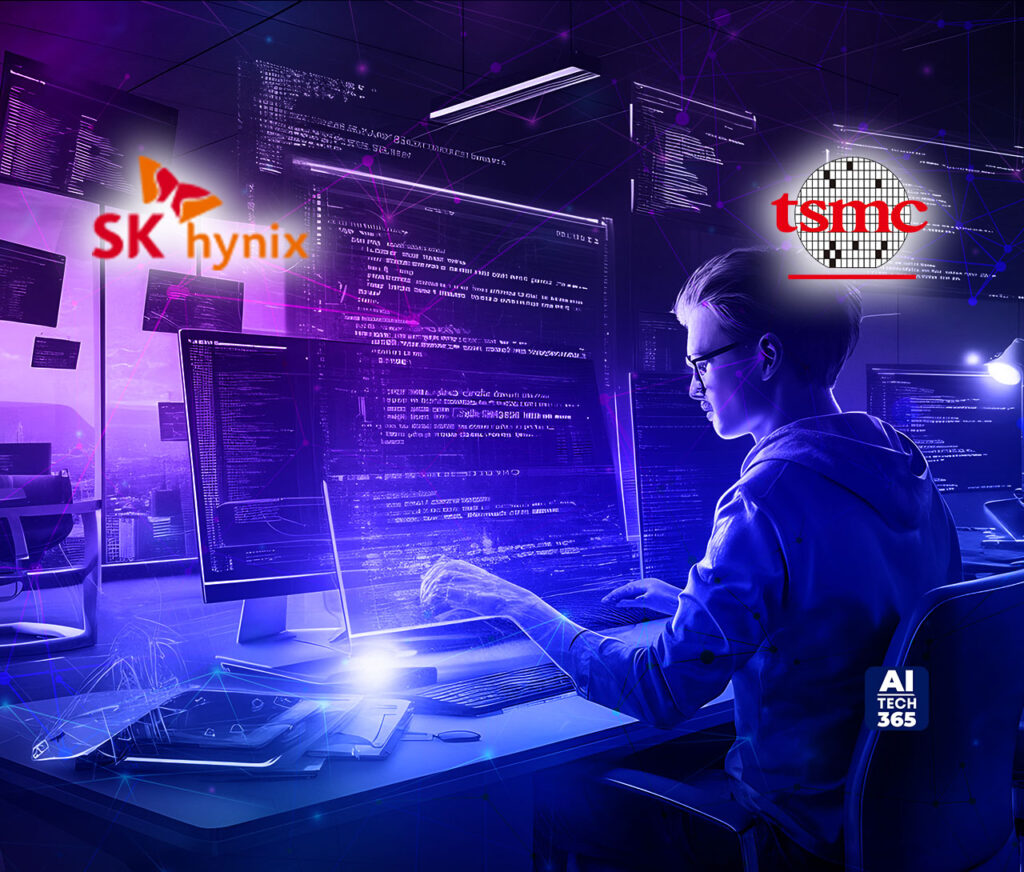SK hynix Inc. announced that it has recently signed a memorandum of understanding with TSMC for collaboration to produce next-generation HBM and enhance logic and HBM integration through advanced packaging technology. The company plans to proceed with the development of HBM4, or the sixth generation of the HBM family, slated to be mass produced from 2026, through this initiative.
SK hynix said the collaboration between the global leader in the AI memory space and TSMC, a top global logic foundry, will lead to more innovations in HBM technology. The collaboration is also expected to enable breakthroughs in memory performance through trilateral collaboration between product design, foundry, and memory provider.
The two companies will first focus on improving the performance of the base die that is mounted at the very bottom of the HBM package. HBM is made by stacking a core DRAM die on top of a base die that features TSV technology, and vertically connecting a fixed number of layers in the DRAM stack to the core die with TSV into an HBM package. The base die located at the bottom is connected to the GPU, which controls the HBM.
TSV (Through Silicon Via): An interconnect technology that links upper and lower chips with an electrode that vertically passes through the base logic chip and DRAM chips. There can be thousands of pass-through TSVs depending on the chip design
Also Read: Samsung Develops Industry’s Fastest 10.7Gbps LPDDR5X DRAM, Optimized for AI Applications
SK hynix has used a proprietary technology to make base dies up to HBM3E, but plans to adopt TSMC’s advanced logic process for HBM4’s base die so additional functionality can be packed into limited space. That also helps SK hynix produce customized HBM that meets a wide range of customer demand for performance and power efficiency.
SK hynix and TSMC also agreed to collaborate to optimize the integration of SK hynix’s HBM and TSMC’s CoWoS technology, while cooperating in responding to common customers’ requests related to HBM.
CoWoS (Chip on Wafer on Substrate): A TSMC proprietary packaging process that connects GPU/xPU, a logic chip, and HBM, on a special substrate called an interposer. It is also called 2.5D packaging as the logic chip and the vertically stacked(3D) HBM are integrated into one module which is placed on a horizontal (2D) package substrate
“We expect a strong partnership with TSMC to help accelerate our efforts for open collaboration with our customers and develop the industry’s best-performing HBM4,” said Justin Kim, President and the Head of AI Infra, at SK hynix. “With this cooperation in place, we will strengthen our market leadership as the total AI memory provider further by beefing up competitiveness in the space of the custom memory platform.”
“TSMC and SK hynix have already established a strong partnership over the years. We’ve worked together in integrating the most advanced logic and state-of-the art HBM in providing the world’s leading AI solutions,” said Dr. Kevin Zhang, Senior Vice President of TSMC’s Business Development and Overseas Operations Office, and Deputy Co-Chief Operating Officer. “Looking ahead to the next-generation HBM4, we’re confident that we will continue to work closely in delivering the best-integrated solutions to unlock new AI innovations for our common customers.”
Source: PRNewsWire

